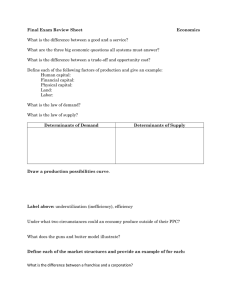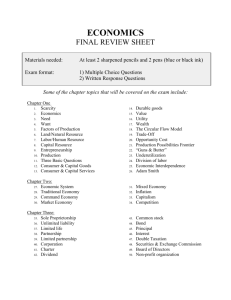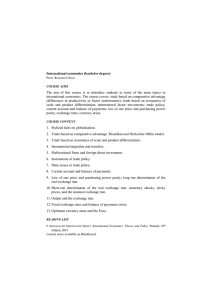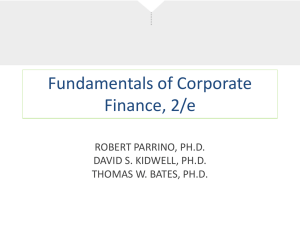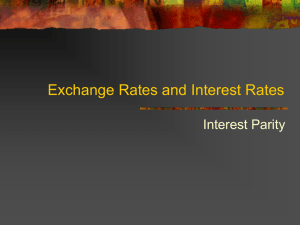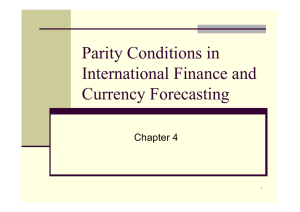Review outline
advertisement
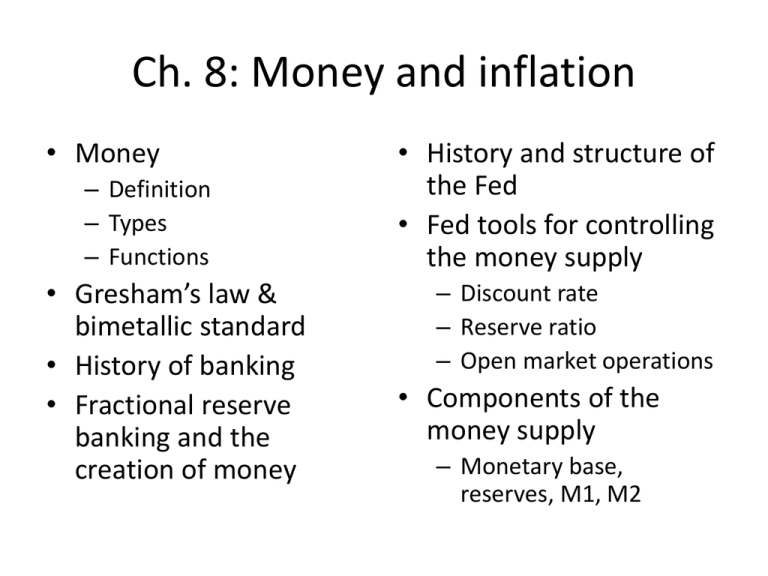
Ch. 8: Money and inflation • Money – Definition – Types – Functions • Gresham’s law & bimetallic standard • History of banking • Fractional reserve banking and the creation of money • History and structure of the Fed • Fed tools for controlling the money supply – Discount rate – Reserve ratio – Open market operations • Components of the money supply – Monetary base, reserves, M1, M2 Ch. 8: Money and inflation • Balance sheet entries for – Open market operation – Change in reserve ratio – Change in public cash holdings • Equation of exchange – Quantity theory of money • Link between inflation and money supply growth • Money market and determination of interest rates – Factors affecting money supply /demand – Bond market when interest rates are above or below equililbrium. Financial markets • Present and future value • Bond prices and interest rates – One year bond – Zero coupon bond • Determinants of bond yields – Risk – Term – Liquidity • Stock market – Fundamental value of stock – Stock metrics • PE ratio • Beta – Factors influencing stock prices – Efficient markets hypothesis • Futures markets and price expectations. Ch. 9: Exchange rates and the balance of payments • Supply/demand model and determinants of exchange rates – Interest rates, imports/exports, expected asset returns, inflation, expected future exchange rates, etc. • Interest rate parity – Conditions required for parity – Arbitrage opportunities when parity doesn’t hold – Implications for exchange rate movements when interest rates aren’t equal • Purchasing power parity – Conditions required for parity – Arbitrage opportunities when parity doesn’t hold – Implications for movements in exchange rates based on inflation differentials Ch. 9: Exchange rates and the balance of payments • (X-M=(S-I) + (Tn-G ) • X-M as indicator of a country’s status as internat’l borrower or lender. • Factors affecting a country’s status as borrower or lender • Debtor/creditor versus borrower/lender • Balance of payments accounts – Capital, current, official settlements – Debits vs credits in accounts – Implications of surplus or deficit in each account • Exchange rate regimes – – – – Flexible Fixed Crawling peg How central banks can manipulate exchange rates and implications for official settlements account and trade flows Ch. 10: AD and AS • Determinants of long run AS – Labor market – Production function • Determinants of short run AS – Nominal wages sticky in short run – Effect of a movement along SRAS on prices, real wages and employment – LRAS • Determinants of AD – C+I+G+(X-M) – Why AD is downward sloping. – Fiscal policy (taxes or spending) – Expectations about inflation, future income – Exchange rates Ch 10 AD and AS • Implications of inflation/recessionary gap for – Real wages relative to equilibrium – Employment relative to equlibrium – Unemployment relative to natural rate – Real GDP relative to potential • Short run and long run effects of a change in AD. • Keynesians versus others on merits of policy interventions to stabilize economy.

